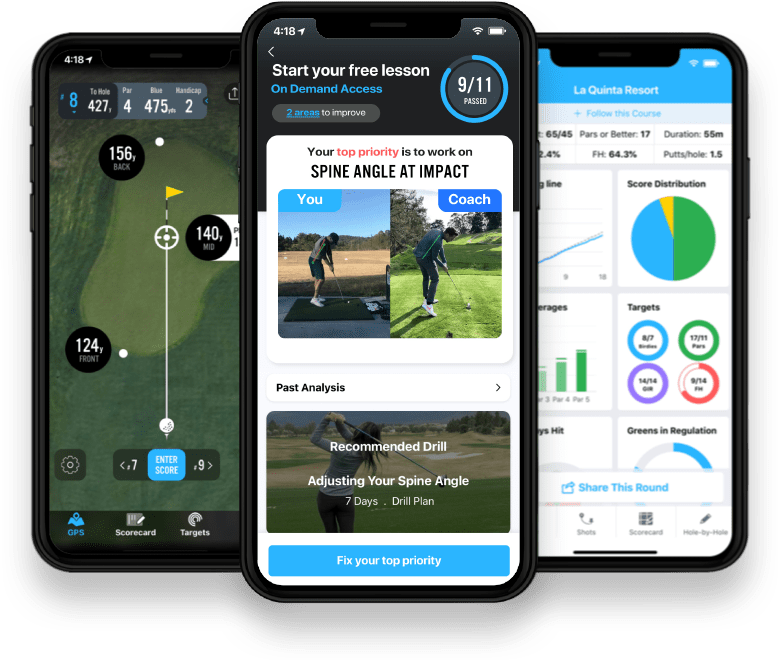Zurich Classic of New Orleans: Course Insight
The last time a two-man format was used in an official PGA Tour event, “Internet” wasn’t even a word yet, Sergio Garcia was in diapers, and the PGA Tour changed its name to the “TPA Tour,” for Tournament Players Association. Fortunately, it reverted back the following year.The Zurich Classic of New Orleans has been an annual Tour event since 1958. This year, however, the event will ditch traditional stroke play and borrow from the flourishing format used in the Ryder Cup and President's Cup. 160 players will form 80 two-man teams, and play two days of foursomes (first and third rounds), and two days of four-ball (second and fourth rounds). At the conclusion of the second round, a cut will be made at the low 35 teams.
This year’s field is the strongest in over a decade, with six of the top-10 players in the world battling it out on the 7,425 yard, par 72 TPC Louisiana course. Star-studded teams include Jason Day and Rickie Fowler, Hideki Matsuyama and Hideto Tanihara, Jordan Spieth and Ryan Palmer, and Henrik Stenson and Justin Rose.
TPC Louisiana is the third Pete Dye course players will see in five weeks (starting with Harbour Town and ending with The PLAYERS Championship). And like every Dye track, patience here is a virtue. The course plays hard and fast, but narrow fairways and smaller greens protect against long hitters dominating here. If players are aggressive and miss off the tee, the course will bite them like the swamp gators that call TPC Louisiana home.
Players will also have to contend with bunkers. Lots of them. More than 100 bunkers (71 of which are deep pot bunkers and one that’s larger than a football field) will turn careless approach shots into near-impossible up-and-downs. There’s also plenty of water, mounding, waste areas, and cypress and oak trees to make things even more disorienting.
Last year, the dogleg left 492-yard, par-4, 12th hole was the most difficult par-4 on the course, giving up only 20 birdies but dishing out 102 bogeys or worse. Aggressive players off the tee will have to carry their ball 314 yards to avoid the large bunker that runs along the left side. If they do this successfully they’ll have the best angle into the green. Others who are less assertive will stay in the right fairway from the tee, but then face a much harder approach shot over a bunker than runs along the entire right side. Two small pot bunkers also protect the right side of the green.

The 215-yard, par-3, 17th hole was the most difficult par-3 last year, surrendering 33 birdies and handing out 92 bogies or worse. Water hugs the entire left side of the hole, and with wind often a factor, hitting the very narrow green can be a challenge.
TPS Louisiana’s signature hole is the closing dogleg right, par-5, 585-yard, 18th hole, and it was also the most difficult par-5 last year giving up 125 birdies and dishing out 45 bogeys or worse. Water runs along the entire right side and three pot bunkers protect the left fairway where most drives will land. Longer hitters will be tempted to reach the green in two, but a series of three unholy bunkers in front of the green can change fortunes quickly. It’s a great risk-reward finishing hole with the potential to determine who the champions are.
Teams To Watch
Over the past 10 years at Zurich, almost 50-percent of approach shots came from 175 to 200 yards out, which means hitting greens-in-regulation with long irons will be crucial. No one’s better than Spieth from this distance in the field. Palmer, however, is one of the worst putters on Tour, and it’s questionable if he’ll be able to take advantage Spieth’s marksmanship. If Team Spieth-Palmer is going to make the cut, Spieth will have to carry them on his back. Expect them to finish a good six strokes or more behind the leaders.
Day and Fowler are clearly one of the strongest teams in the field. Day finished two shots off the lead last year, and was first in the field in proximity-to-hole on approach. He did this primarily by blistering the ball off the tee and then sticking approach shots from inside 100 yards for multiple birdie opportunities. There’s no reason to expect him to play any different this year. Fowler’s been a steady performer this season in greens-in-regulation, and is fifth on Tour in birdie average. His putting has been shaky at times, but this duo should see plenty of scoring chances between them. Look for Team Day-Fowler to finish Top-10.
Winning Team Prediction
Stenson and Rose weren’t quite as successful together this past Ryder Cup as they were in 2014 when they set a Ryder Cup record of 12 birdies in 16 holes. But if you’re looking for a team least likely to make mistakes, and also one most likely to run off a dominating birdie bonanza, they’re it. Stenson and Rose have been teammates for a long time, play extremely well together, and even seem to feed off each other. You can’t underestimate that kind of teamwork in this format. Expect a breathtaking performance from Team Stenson-Rose and a Zurich title for this energizing duo.
The 18Birdies app is now available for iPhone and Android devices. Click here for your free download. For more information, check out all the latest news at 18Birdies.com.
 Try for Free
Try for Free
